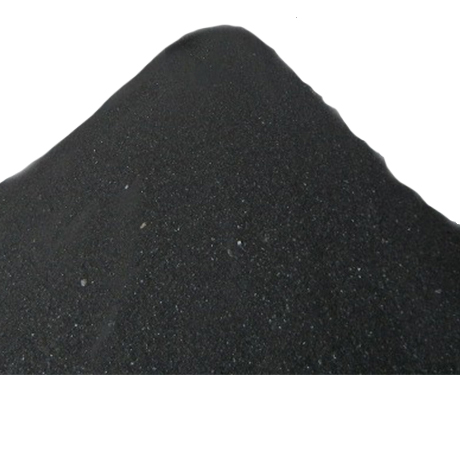Cobalt Concentrate
Nickel sulfide concentrates can be treated by either roasting or flash smelting to produce matte from which nickel and cobalt can be recovered hydrometallurgical, or they may be treated by an ammonia solution pressure leach. The residue is removed. A feed of matte and sulphide concentrate containing approximately 0.4% cobalt and 30% sulphur is pressure leached at elevated temperature and pressure in an ammoniacal solution to produce a solution of nickel, copper and cobalt. By boiling away the ammonia; copper is precipitated as a sulfide and sent to a smelter. The ore is comminute and the cobalt rich oxides are separated by froth flotation. The cobalt-bearing concentrate is then mixed with lime and coal, and then melted in a reducing atmosphere. Iron and lighter impurities float to the surface as solid dross or are expelled from the melt as gas. The remaining liquid is composed of a heavier copper smelt containing approximately 5% cobalt that is processed for its copper and a lighter slag that is approximately 40% cobalt that is further refined by hydrometallurgical and electrolytic processing. Concentrations of cobalt oxide (Co3O4) may also be reduced by the aluminothermic reaction or with carbon in a blast furnace.[1]
Nickel sulfide concentrates can be treated by either roasting or flash smelting to produce matte from which nickel and cobalt can be recovered hydrometallurgical, or they may be treated by an ammonia solution pressure leach. The residue is removed. A feed of matte and sulphide concentrate containing approximately 0.4% cobalt and 30% sulphur is pressure leached at elevated temperature and pressure in an ammoniacal solution to produce a solution of nickel, copper and cobalt. By boiling away the ammonia; copper is precipitated as a sulfide and sent to a smelter. The ore is comminute and the cobalt rich oxides are separated by froth flotation. The cobalt-bearing concentrate is then mixed with lime and coal, and then melted in a reducing atmosphere. Iron and lighter impurities float to the surface as solid dross or are expelled from the melt as gas. The remaining liquid is composed of a heavier copper smelt containing approximately 5% cobalt that is processed for its copper and a lighter slag that is approximately 40% cobalt that is further refined by hydrometallurgical and electrolytic processing. Concentrations of cobalt oxide (Co3O4) may also be reduced by the aluminothermic reaction or with carbon in a blast furnace.[1]
Properties of Cobalt Concentrate
| Molecular Weight | 58.93 |
|---|---|
| Appearance | Grey |
| Boiling point | 2870 °C |
| Melting point | 1495 °C |
| Density | 8.9 g/cm3 |
| Electrical Resistivity | 6.24 microhm-cm @ 20 °C |
| Electronegativity | 1.8 Paulings |
| Heat of fusion | 3.64 Cal/gm mole |
| Heat of vaporization | 93 K-cal/gm atom at 2870 °C |
| Poisson's ratio | 0.31 |
| Specific heat | 0.109 Cal/g/K @ 25 °C |
| Thermal conductivity | 1.0 W/cm/K @ 298.2 K |
| Thermal expansion | (25 °C) 13.0 µm·m-1·K-1 |
| Vickers hardness | 1043 MPa |
| Young's modulus | 209 GPa |
